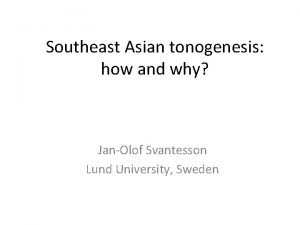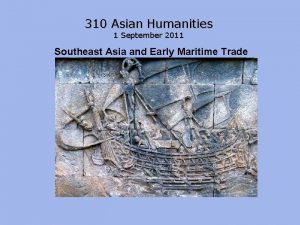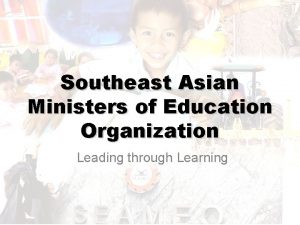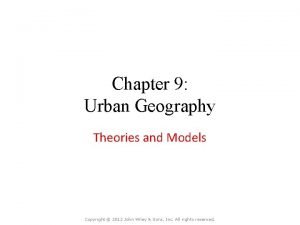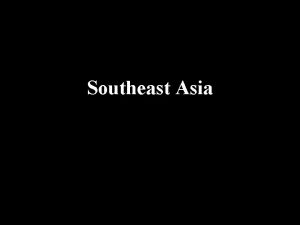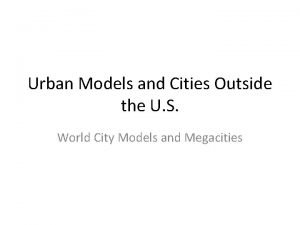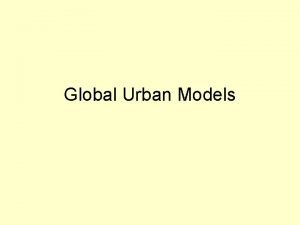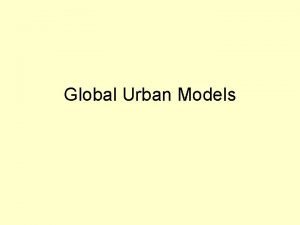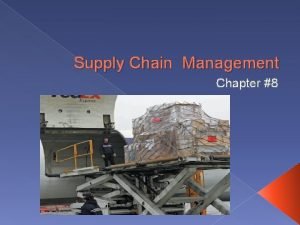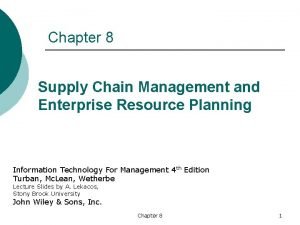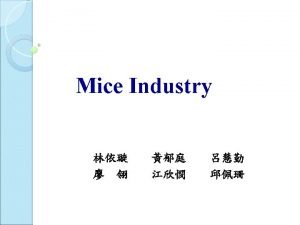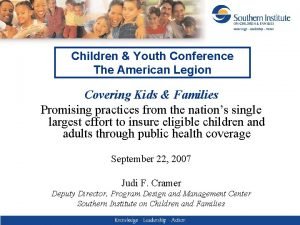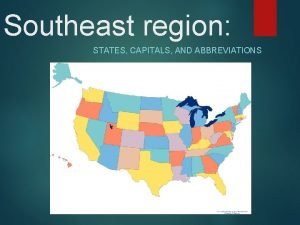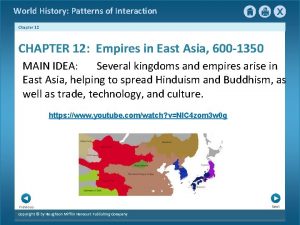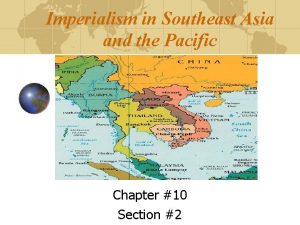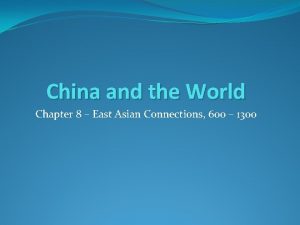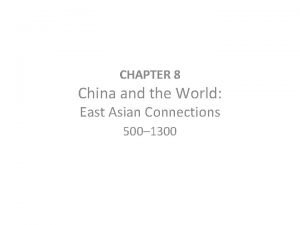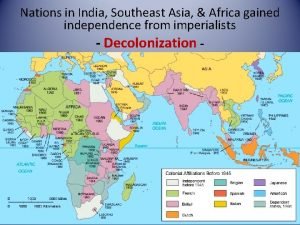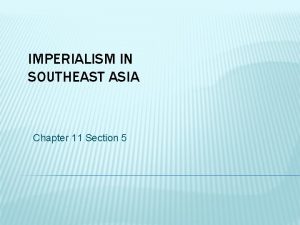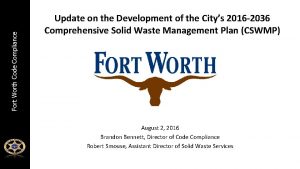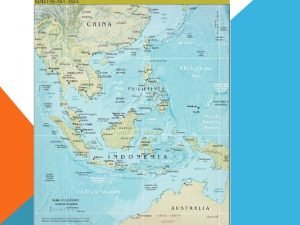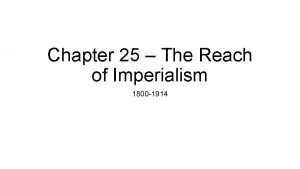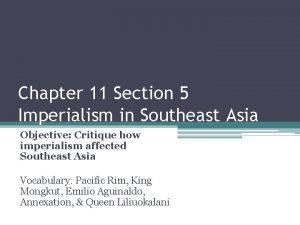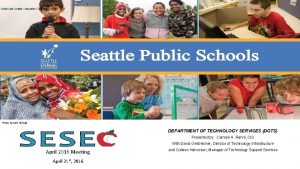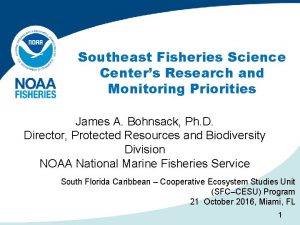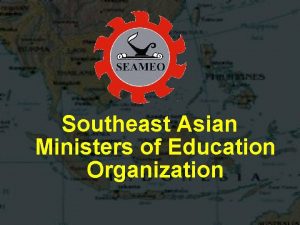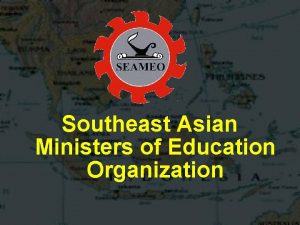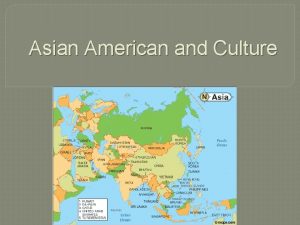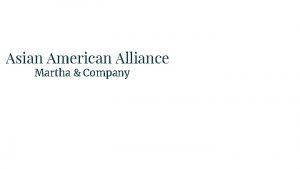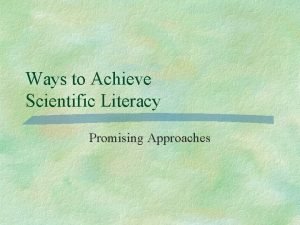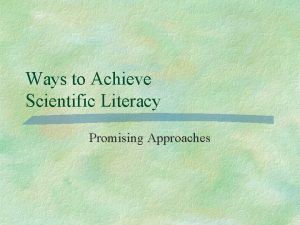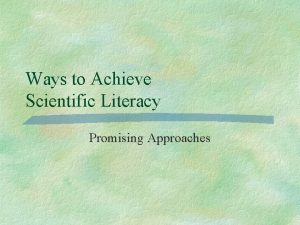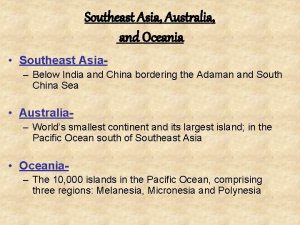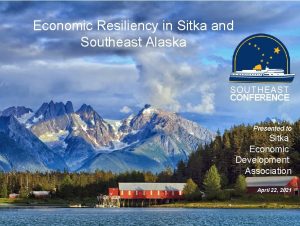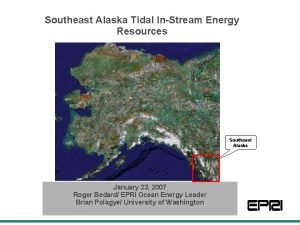Promising Models and Practices with Southeast Asian American











































- Slides: 43

Promising Models and Practices with Southeast Asian American Communities Zha Blong Xiong University of Minnesota Yorn Yan United Cambodian Association of Minnesota

Overview of Presentation • Context of Southeast Asian (SEA) Americans in Minnesota. • The Citizen Health Care Model to build collaboration between the University and Southeast Asian communities. • The Statewide Tobacco Education and Education Project (STEEP) Model. – Some evaluation data testing the model. • Lessons learned.

SEA Resettlement in the United States, 1975 -1994 40, 000 35, 000 30, 000 25, 000 20, 000 15, 000 10, 000 5, 000 19751976 19771978 19791980 19811982 19831984 19851986 19871988 19891990 19911992 19931994

U. S. Southeast Asian Population 231, 616 247, 595 Cambodian (1. 73%) 191, 200 Lao (1. 33%) Hmong (1. 73%) Vietnamese (10. 82%) 1, 938, 393 1, 548, 449 Others Cambodian Hmong Lao Asian Indians Vietnamese 2, 843, 391 Chinese 3, 347, 229 Korean Filipino Asian Indians Others Filipino Korean 2, 555, 923 1, 423, 784

Minnesota Southeast Asian Population MN Asian population, by ethnicity MN Population 1% 2% 4% 4% 5% 5% Whites Blacks Hispanics Cambodian; 3. 8% Hmong; 26. 1% Other; 13. 3% Laotian; 4. 7% Asians Native Americans Filipino; 6. 2% Multiracial 83% Korean; 8. 3% Vietnamese; 10. 7% Asian Indian; 15. 0% Chinese; 11. 4%

Hmong Vietnamese


Most Southeast Asians in Minnesota concentrated in urban and poor areas • 53% of Minnesota’s Hmong population lives in Ramsey County and 45% within the City of St. Paul. • The Hmong comprise 57% of all Asians in Ramsey County nd 65% of Asians in St. Paul ( 2005 -2009 American Community Survey 5 -Year Estimates).

Percentage of Household Income below the Poverty Line in St. Paul, Ramsey and Hennepin Counties, MN by Race St. Paul Ramsey County Hennepin County African American Asian- Hmong Caucasian American Hispanic Indian non Hmong 3. 4 19. 2 12. 8 17. 8 25. 8 33. 9 2. 6 18. 7 12. 3 14. 1 12. 6 31. 9 1. 7 19. 5 12. 7 20. 2 6. 3 33. 7

Linguistically Isolated A recent study found that 81% of first generation respondents reported using a language other than English as their primary language, while 20% of second generation respondents also reported this (Robynn el al. , 2010). Source: Census 2000 Data for Minnesota Population.

Smoking rates • Smoking rates in the general population are declining since 2004 (stalled at 20%) • Smoking rates in the SEA communities are still high. – Some studies show that the prevalence rates for SEAs ages 18 and over ranged from 34% to 70% (Bautista, Ednacot, & Wong, 2005; Chen, 2001; Mc. Phee et al. , 1995). – A 2009 study of 2, 856 Hmong youth and adults in Wisconsin found that 15% of the youth ages 12 -17 reported daily use and 32% ever use. – The American Legacy Foundation (2001) reported that the number of Asian American teens who smoke increased from 4. 4% in middle school to 33. 1% by 12 th grade. – Blue Cross and Blue Shield of Minnesota’s (2009) SEA study found that men are more likely to smoke (30%) than women (7%).

Engaging the Southeast Asian Communities to Address the Tobacco Use Problem Community Engagement: Buy-in & Planning Embedding and Systems Change Capacity Building Culturally Tailored, Multi. Approached Education

Engaging the Southeast Asian Communities to Address the Tobacco Use Problem Lao Family Community of Minnesota Lao Advancement Organization of America Association for Nonsmokers. Minnesota STEEP Collaborative Executive Team (CET) Department of Family Social Science, University of Minnesota United Cambodian Association of Minnesota, Inc. Association for the Advancement of Hmong Women in Minnesota

Community Engagement Buy-in & Planning Model Citizen Health Care Model’s Principles: 1. The greatest untapped resource for strengthening families and communities is the knowledge, wisdom, and lived experience of community members/citizens. 2. Citizens must be included in the engagement process as producers and contributors, and not a clients or consumers of services. 3. Researchers must come to the collaboration as citizen professionals to identify challenges, sources and nature of the problem, mobilize resources, and generate plans of action together. Source: Doherty & Carroll, 2002; Doherty & Mendenhall, 2006.

Community Engagement Buy-in & Planning Process The Engagement Process for the Statewide Tobacco Education and Engagement Project (STEEP) took 2 Years (supported by Clear. Way Minnesota: 2005 -2007): Action plans & program development: Retreat. Data collection: Focus groups. Data collection: Stakeholder interviews. Community leadership groups. Identified stakeholders for the community leadership groups. Capacity building for the collaborative & staff. Shared decision making and partnership building.

The STEEP Project • Mr. Yorn Yan

Dandelion Systems Change

Capacity Building Model: LAAMPP • Leadership and Advocacy Institute to Advance Minnesota’s Priority Populations project (Lew, Honma, Community Engagement: Buy-in & Planning Portugal, & Baezconde-Garbanati, 2008). – – Build community and cross-cultural capacity for tobacco control Developing a pool of Coaches Approach: Train-the-trainers Embedding and Systems Change Capacity Building (Corelli et al. , 2007; Orfaly et. el. , 2005). – – – Capacity building of the collaboration Staff/Tobacco Educators Volunteers: Community fellows Allies: Community leaders Community members Culturally Tailored, Multi. Approached Education

Culturally Tailored, Multi. Approached Education • Setting: Places of congregation (“if we build it, people will come” is not working ) Community Engagement: Buy-in & – Community events Planning – Temples Embedding – Multi-housing units and Systems – Community-based organizations Change • Materials: Posters, objects, tools, etc. (see samples) Culturally • Pedagogies: Story telling, demonstrations, Tailored, Multi -Approached Education and role playing. • Evaluation: Pre- and post-tests; retrospective Capacity Building

Chemical Poster What it is: A poster depicting the chemicals present in cigarettes. Why it is used: It is used to alert observers to the dangerous chemicals found in cigarettes. Its message: The chemicals pictured in this poster are chemicals that many observers will recognize. This poster encourages smokers to ask themselves, “If these chemicals are used in each cigarette, why am I still smoking? Retailer: Nimco Inc. , www. nimcoinc. com, 1 -800 -962 -6662, Fax: 1 -270 -273 -5844

Tar Jar What it is: This jar shows the amount of tar a smoker consumes in one year from smoking a pack (20 cigarettes) a day. Why it is used: It provides a visual picture of the tar that turns the lungs black. Its message: This educational tool teaches the effects of tobacco use on health. Retailer: Nimco Inc. , www. nimcoinc. com, 1 -800 -962 -6662, Fax: 1 -270 -273 -5844

Community Engagement: Getting Communities & Institutions to Commit to Change • Embedding practices and policies – Healthy living messages and practices become part of each agency’s programs. – Co-presentations and team-focused programs. • Systems change practices and policies – – Develop appropriate language for policies Adopt policies Implement and enforce adopted policies Educate and inform existing state and local policies Community Engagement: Buy-in & Planning Embedding and Systems Change Capacity Building Culturally Tailored, Multi -Approached Education

Commit to Embedding and Systems Change Action taken: Date Initiated Date Completed Comments Initial contact w/ member who knows someone in the entity. Talk with representative(s) of the entity about potential policy. Conversation with and/or present to group about potential policy. Have a conversation with the decision maker or the executive group. Present idea and language of policy and what the entity wants to cover. Help draft policy idea and language to the entity. Revise policy statement. Policy adopted. Community Engagement: Buy-in & Planning Embedding and Systems Change Capacity Building Culturally Tailored, Multi -Approached Education

NUMBER OF POLICIES PASSED TYPE OF POLICY TOBACCO COMMUNITY BASED ORG. SYSTEMS TEMPLE GROUP Hmong Soccer Tobacco Tournament (1) No Tobacco Funding (5) Tobacco X Strengthening Comprehensive Policy (5) World Refugee Day (1) Tobacco X Multi-unit Housing (1) Tobacco Cambodian Temple (1) Tobacco X Lao Temple (1) 20% healthy options (5) Tobacco Healthy Eating X X 20% healthy options (1) Healthy Eating X OTHERS X Tobacco 20% healthy options (1) Healthy Eating Bike racks (5) Active Living MULTIUNIT HOUSING X X

Lessons Learned • Collaboration – – – • Shared vision about the community well-being. Trust and respect one another as professional citizens. Commitment from the top of the organizations (i. e. , executive directors). Shared leadership and sacrifice at the collaborative level (chair committees, rally, petition, cost to pay grant writer, etc. ). The role of the University in the collaboration is key to our program success (i. e. , model development, grant writing, and evaluation). The ongoing contributions of the TAs, consultants, and funders to guide, support, and strengthen the collaboration. Staff – – – Capacity building is critical (i. e. , demonstrate credibility, buy-in, and trust in the community, esp. with young, second-generation staff). Mentoring and coaching staff play an important role in our successes. Organizational flexibility (in office vs. in the field).

Lessons Learned • Evaluation – Evaluation is a challenge when working with low literacy population. • The need to balance between delivering the program vs. collecting data – An hour training with pre- and post-tests – The challenge of using survey to collect data (i. e. , response options; right and wrong answers). – Reliable vs. practical measures.

Lessons Learned • Volunteers – – • Challenge of retaining volunteers. Challenge of getting volunteers to commit to advanced training (tier three – two week training and a mentored project). Program – – – Build relationship with people is key to engagement, education, and systems change. If we move too quickly into systems change, the buy-in is not there in the community to pass policies. People need to personalize the problem before they can commit to change.

Please don’t hesitate to contact us if you want to… • Learn more about the Citizen Health Care Model to engage other immigrant and/or low SES communities; • Learn more about our STEEP’s Dandelion and Systems Change Model; • Have access to our evaluation data; or • Know more about our lessons learned and other success stories.

CDC’s Program Evaluation Framework for Program Evaluation in Public Health. MMWR 1999; 48(No. RR-11) http: //www. cdc. gov/eval/framework. htm

American Evaluation Association Evaluation Standards • Utility: credible, negotiated, timely • Feasibility: practical, context, efficient • Propriety: formal agreements, conflict of interest, transparency, inclusive • Accuracy: valid, reliable, justified • Accountability: documentation; internal & external metaevaluation Yarbrough, D. B. , Shulha, L. M. , Hopson, R. K. , and Caruthers, F. A. The program evaluation standards: A guide for evaluators and evaluation users (3 rd ed. ). Thousand Oaks, CA: Sage; 2011 http: //www. eval. org/evaluationdocuments/progeval. html

Evaluation Address four evaluative questions: (1) How much have we been reaching out to the SEA communities? (2) How much do the people in the community know about STEEP? (3) How much have we made a difference in the SEA communities? (4) How much have we made a difference to the people we educated?

How much have we been penetrating the SEA communities? • Conducted 65 events, delivered educational tools to 40, 000 people in three target SEA locations: Twin Cities, Rochester, & St. Cloud. • Recruited and trained over 120 volunteers; 20 of them delivered the education in their respective community. • Networked/partnered with over 72 agencies and/or groups working on a variety of projects/activities in Minnesota.

How much do the people in the community know about STEEP? • Nearly 97% of all survey respondents reported having seen STEEP at community events in the past year. • More than 50% of the survey respondents indicated hearing people talking “quite often” about STEEP’s work in their communities within the past year (2009 -2010).

How much have we made a difference in the SEA communities?

How much have we made a difference to the people we educated? (Knowledge)

How much have we made a difference to the people we educated? (Smoking norms inside the home). Changing smoking norms inside the home • Graph 11. Rules about not smoking inside the home

How much have we made a difference to the people we educated? (see smoking now vs. a year ago in the community)

How much have we made a difference to the people we educated? (see smoking now vs. a year ago in the community)

References Bautista, R. , Ednacot, E. , & Wong, A. (2005, September). Asian Americans and Tobacco 101. An invitational workshop presented to the Minnesota Asian and Pacific Islanders Community, St. Paul, Minnesota. Blue Cross and Blue Shield of Minnesota, Clear. Way Minnesota, Asian Pacific Tobacco Coalition of Minnesota, & Southeast Asian Refugee Community Home (2009). Tobacco use in Minnesota: A quantitative survey of Cambodian, Hmong, Lao, and Vietnamese community members. Minneapolis, MN: Clear. Way Minnesota. Bostrom, R. P. , Anson, R. , & Clawson, V. K. (1993). Group facilitation and group support systems. Group Support Systems: New Perspectives, 146 -168. Brimmer, D. J. , Mc. Cleary, K. K. , Lupton, T. A. , Faryna, K. M. , Hynes, K. , & Reeves, W. C. (2008). A train-the-trainer education and promotion program: Chronic fatigue syndrome --a diagnostic and management challenge. BMC Medical DREGAN (2010). Burcum, J. (2008, May 7 th). Breathe deeply and ponder this anniversary. Star tribune. Retrieved from: http: //www. startribune. com/ opinion/commentary/ 18746919. html? page=2&c=y Centers for Disease Control and Prevention (1999). Cigarette smoking among adults in the United States. MMWR, 48(43), 993 -996.

References Centers for Disease Control and Prevention (CDCP). (2004). New surgeon general’s report expands list of diseases caused by smoking. Retrieved at from January 8, 2006 from http: //www. cdc. gov/tobacco/sgr_2004/pressrelease. htm. Centers for Disease Control and Prevention (CDCP). (2007). Reducing youth exposure to tobacco Influences, Best Practices: For Comprehensive Tobacco Control Programs. U. S. Department of Health and Human Services. Chen, M. S. (2001). The status of tobacco cessation research for Asian Americans and Pacific Islanders. Asian American and Pacific Islander Journal of Health, 9(1), 61 -65. Council on Asian-Pacific Minnesotans and Minnesota Asian/American Health Coalition. (2009). Health Disparities: An Asian American & Pacific Islander Community Response. Diverse Racial Ethnic Groups and Nations (DREGAN). (2006). Tobacco Use in Minnesota: Perspectives from Cambodian, Hmong, Laotian, and Vietnamese Communities, Asian Pacific Tobacco-Free Coalition of Minnesota, Blue Cross and Blue Shield of Minnesota, Minnesota Partnership for Action Against Tobacco, Southeast Asian Refugee Community Home, March 2006. Doherty, W. J. , & Carroll, J. S. (2002). The families and democracy project. Family Process, 41, 579– 589.

References Doherty, W. J. , & Mendenhall, T. J. (2006). Citizen health care: A model for engaging patients, families, and communities as co-producers of health. Families, Systems, & Health, 24(3), 251 -263. Eastman, T. Are Tobacco Companies Targeting Asian Americans? Retrieved from: http: //www. helium. com/items/491813 -are-tobacco-companies-targeting- Asian-Americans Giovino, G. A. , Chaloupka, F. J. , Hartman, A. M. et al. (2009). Cigarette Smoking Prevalence and Policies in the 50 States: An Era of Change—The Robert Wood Johnson Foundation Impact Teen Tobacco Chart Book. Buffalo, NY: University at Buffalo, State University of New York. Granner, M. L. , & Sharpe, P. A. (2004). Evaluating community coalition characteristics and functionality: A summary of measurement tools. Health Education Research, 19(5), 514 -532. Hoskins, L. & Angelica, E. (2005). Forming Alliances: Working together to achieve mutual goals. Fieldstone Alliance. Jenkins, C. N. H. , Mc. Phee, S. J. , Bonilla, N-T, Nam, T. V. , & Chen A. (1995). Cigarette smoking among Vietnamese immigrants in California. American Journal of Health Promotion, 9, 254 -256. Jenkins, C. N. H. , Mc. Phee, S. J. , Le, A. , Pham, G. Q. , Ha, N. , & Stewart, S. (1997). The effectiveness of a media-led intervention to reduce smoking among Vietnamese-American men. American Journal of Public Health, 87(6), 1031 -1034. Lam, T. C. & Bengo, P. (2003). A comparison of three retrospective self-reporting methods of measuring change in instructional practice. American Journal of Evaluation, 24(1), 65 -80.

References Lew, R. , Honma, J. , Portugal, C. , & Baezconde-Garbanati, L. (2008). The final evaluation report: Assessing the impact of Leadership and Advocacy Institute to Advance Minnesota’s Parity for Priority Populations [LAAMPP]. Minneapolis, MN: Clear. Way Minnesota. Linn, R. L. , & Slinde, J. A. (Winter 1977). The determination of the significance of change between pre- and post-testing periods. Review of Educational Research, XLVII, 121 -50. Marcotty, J. (December 11, 2007). Statewide ban motivating Minnesota smokers to quit. Star Tribune. Retrieved from: http: //www. startribune. com/lifestyle/ health/12340141. html Mc. Phee, S. J. , Jenkins, C. N. H. , Wong, C. , et al. (1995). Smoking cessation intervention among Vietnamese Americans: A controlled trial. Tobacco Control, 4, 16 -24. Minnesota State Demographer Center (n. d. ). Immigrants in Minnesota. Retrieved from January 8, 2006 at http: //www. demography. state. mn. us/ Orfaly, R. A. , Frances, J. C. , Campbell, P. , Whittemore, B. , Joly, B. , & Koh, H. (2005). Train-the-trainer as an educational model in public health preparedness. Journal of Public Health Management and Practice, 11(6), S 123 -127. Pratt, C. C. , Mc. Guigan, W. M. , & Katzev, A. R. (2000) Measuring program outcomes: Using retrospective pretest methodology. American Journal of Evaluation, 21(3), 341 - 349. Eberle, Hogle, & Peterson (2011, June). Program evaluation and healthy equity research. Workshop presented to the 2 nd Annual Health Equity & Leadership Institute (HELI), University of Wisconsin. Madison.

References Rumbaut, R. G. (1989). Portraits, patterns, and predictors of the refugee adaptation process: Results and reflections from the IHARP panel study. In D. W. Haines (Ed. ), Refugees as immigrants: Cambodians, Laotians, and Vietnamese in America. Totowa, NJ: Rowman & Littlefield Publishers, Inc. Sellnow, G. (2008, March 1 st). Bar patrons light up under “Freedom to Breath Act, ” Rochester (MN) Post-Bulletin. Retrieved from: http: //www. postbulletin. com/ newsmanager/templates/localnews_story. asp Tobacco Law Center. (2009). Tracking tobacco laws: A Minnesota Digest, 2 nd ed. , Tobacco Law Center, St Paul, MN. U. S. Department of Health and Human Services. (2007). Best Practices: For Comprehensive Tobacco Control Programs. U. S. Department of Health and Human Services, Centers for Disease Control and Prevention. Xiong, Z. B. , Tuicomepee, A. , La. Blanc, L. , & Rainey, J. (2006). Hmong immigrants’ perceptions of family secrets and recipients of disclosure. Families in Society: The Journal of Contemporary Social Services, 87(2), 231 -239. Yee, B. Health and health care of Southeast Asian American elders: Vietnamese, Cambodian, Hmong, and Laotian elders. University of Texas Medical Branch, Galveston. Retrieved from: http: //www. stanford. edu/group/ethnoger/southeastasian. html
 Writing systems of asia
Writing systems of asia Tonogenesis
Tonogenesis Southeast asian alphabets
Southeast asian alphabets The southeast asian ministers of education organization
The southeast asian ministers of education organization Southeast asian city model definition ap human geography
Southeast asian city model definition ap human geography Southeast asian architecture
Southeast asian architecture Hoyt sector model
Hoyt sector model City model
City model African city model
African city model Latin america urban model
Latin america urban model Global order fulfillment
Global order fulfillment Pacific islander inventions
Pacific islander inventions Order promising module of supply chain management
Order promising module of supply chain management Order promising module of supply chain management
Order promising module of supply chain management Promising
Promising Attract new customers by promising superior value
Attract new customers by promising superior value Promising youth conference
Promising youth conference What is the difference between models & semi modals?
What is the difference between models & semi modals? Southeast states and capitals and abbreviations
Southeast states and capitals and abbreviations Griffin-ford latin america city model
Griffin-ford latin america city model Mainland asia
Mainland asia Chapter 12 section 5 kingdoms of southeast asia and korea
Chapter 12 section 5 kingdoms of southeast asia and korea Imperialism in southeast asia and the pacific
Imperialism in southeast asia and the pacific Chapter 8 china and the world east asian connections
Chapter 8 china and the world east asian connections Chapter 8 china and the world east asian connections
Chapter 8 china and the world east asian connections Difference between african elephant and asian elephant
Difference between african elephant and asian elephant Black and asian counselling network
Black and asian counselling network Ray's heating & air conditioning
Ray's heating & air conditioning Southeast region physical features
Southeast region physical features Geographical features of the southeast region
Geographical features of the southeast region Landforms of southeast asia
Landforms of southeast asia Navfac se
Navfac se Is india southeast asia
Is india southeast asia Jppso southeast
Jppso southeast Southeast rpdc
Southeast rpdc Chapter 11 section 5 imperialism in southeast asia
Chapter 11 section 5 imperialism in southeast asia City of fort worth code compliance
City of fort worth code compliance Mon khmer
Mon khmer Chapter 27 section 5 imperialism in southeast asia
Chapter 27 section 5 imperialism in southeast asia The reach of imperialism
The reach of imperialism Lesson 1 physical geography of southeast asia
Lesson 1 physical geography of southeast asia Chapter 27 section 5 imperialism in southeast asia
Chapter 27 section 5 imperialism in southeast asia Southeast seattle education coalition
Southeast seattle education coalition Southeast fisheries science center
Southeast fisheries science center

